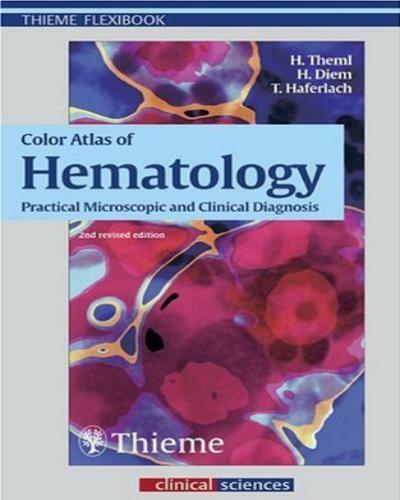Although this is the second English edition of our hematology atlas, this edition is completely new. As an immediate sign of this change, there are now three authors.
Color Atlas of Hematology 2nd Edition

A Flexible book for both the specialist and non-specialist, the new book offers accessible information on hematology in a succinct format. In addition to providing basic methodology, the book utilizes more than 260 color illustrations to detail the most up-to-date clinical procedures. Numerous tables and flow charts are included to assist in differential diagnosis, making this a valuable didactic reference for nurses, practicing physicians and residents preparing for board examinations
The completely updated visual presentation uses dig-ital images, and the content is organized according to the most up-to-date morphological classification criteria.
Most physicians are fundamentally “visually oriented.” Apart from immediate patient care, the microscopic analysis of blood plays to this preference. This explains the delight and level of involvement on the part of practitioners in the pursuit of morphological analyses.
Specialization notwithstanding, the hematologist wants to preserve the opportunity to perform groundbreaking diagnostics in hematology for the general practitioner, surgeon, pediatrician, the MTA technician, and all medical support personnel. New colleagues must also be won to the cause. Utmost attention to the analysis of hematological changes is essential for a timely diagnosis.
Even before bone marrow cytology, cytochemistry, or immunocyto-chemistry, information based on the analysis of blood is of immediate relevance in the doctor’s office. It is central to the diagnosis of the diseases of the blood cell systems themselves, which make their presence known through changes in blood components.
The exhaustive quantitative and qualitative use of hematological diagnostics is crucial. Discussions with colleagues from all specialties and teaching experience with advanced medical students confirm its importance. In cases where a diagnosis remains elusive, the awareness of the next diagnostic step becomes relevant. Then, further investigation through bone marrow, lymph node, or organ tissue cytology can yield firm results. This pocket atlas offers the basic knowledge for the use of these techniques as well.
Password: pdflibrary.net
